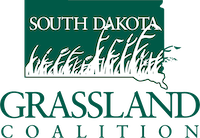Monitor Plant Height: Pay close attention to the height of your pasture plants during the green-up. Grazing should begin when plants reach the optimal height for your livestock and the environment. Avoid grazing too early or too late to prevent overgrazing or underutilization.
Implement Rotational Grazing: Divide your pastures into smaller paddocks and rotate your livestock regularly. This allows rest periods for pastures, allowing plants to recover and ensuring a consistent forage supply throughout the season.
Avoid Overgrazing Cool-Season Grasses: Cool-season grasses often green up early in the spring. These grasses are valuable for early forage but can be sensitive to overgrazing. Grazing them too short can damage their growth points. Maintain an adequate residual height to support plant health.
Optimize Stocking Rates: Determine stocking rates based on pasture size and condition. Overstocking can lead to overgrazing and damage to plants. Ensure that your livestock numbers are in balance with the available forage.
Adapt to Changing Conditions: Be flexible in your grazing plan and adapt to changing weather and plant conditions. Weather variations can impact the rate of green-up, so adjust your grazing schedule accordingly to avoid overgrazing during rapid growth periods.
